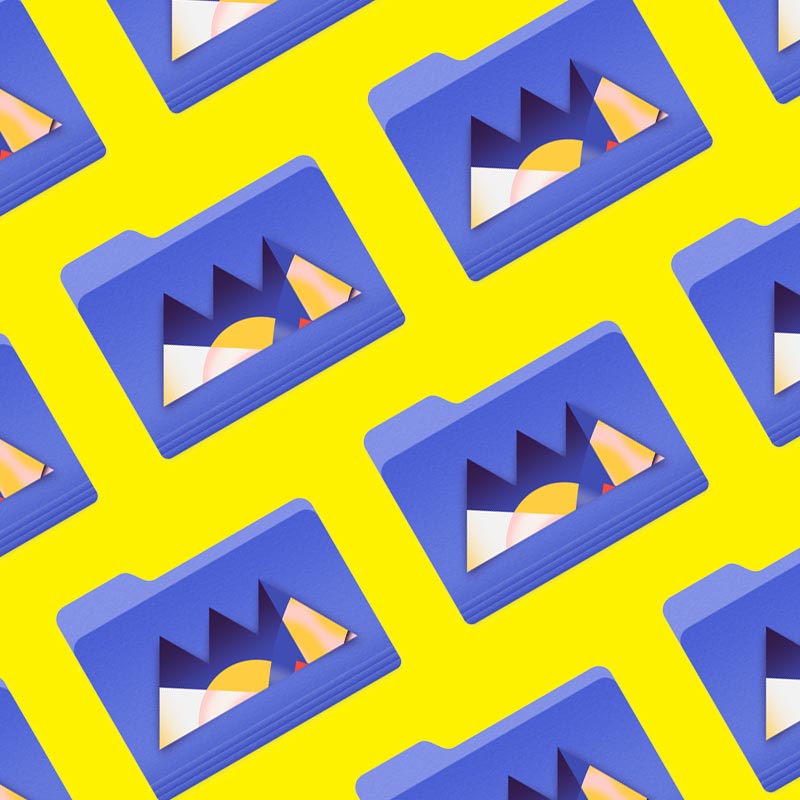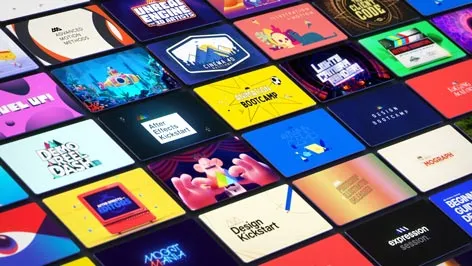Add a bit more style to your animation without bugging it up!
Working in mixed-media adds a challenging new layer to animation. Unless you're planning on spending the rest of your life staring at a render queue, it's better to work smarter. But how do you add style without agonizing over every detail? We're sharing an exclusive tip from our Holdframe Workshop so you can add a bit more life and style to your characters, even in mixed media!

This is an exclusive look at one of the lessons learned in the "Wild, Bug-Filled World of 3D" Holdframe Workshop, featuring the intensely talented Doug Alberts. While the Workshop focuses on designing in 3D and mixed-media, Doug makes sure to show off a few tricks for finding—and adding—your personal style, and we couldn't keep those kinds of secrets any longer. This is just a sneak peek at some of the amazing lessons Doug has in store, so grab your most colorful pencils and some sketching paper. It's time to enter a bug-filled world.
Stylized Movement in Mixed Media Animation
A Wild, Bug-Filled World of 3D
Bugged is a beautiful mixed media short film created in 2019 by Doug Alberts. Inspired by stop-motion, claymation, and all things practical, this film documents the wild unexpected events of this bug-filled world. In addition to the video walkthroughs, this Workshop includes various project files that were used directly in the production of these films. From initial mood boards and storyboards, down to production project files.
Doug Alberts is as bright of a rising star as there can be. He is overwhelmingly positive, and this outlook permeates everything he touches—from his amazing work to his unwavering productivity. As a recent grad and newly-minted director at Hornet, he is seemingly unstoppable! We couldn't help but beg him to join us on our first Clubhouse event, and the feedback from the community was overwhelming. Watch the video above and we're sure you'll agree.
-----------------------------------------------------------------------------------------------------------------------------------
Tutorial Full Transcript Below 👇:
Doug Alberts (00:15): So usually when I'm doing 2d and 3d, this is like the biggest question mark of is everything gonna like line up. Okay. And usually it just comes from like, trying to feel my way through the motions. So for this shot, we have, I call them like cloud bugs coming in and they're like puffing out smoke. But the, the tricky part came to when, like, I was like, I want this guy to kind of walk in. So I guess from like just kind of taking a look at walk cycles and how does like a Quadro pen walk? I feel like it had this kind of like up and down motion. And from that, um, the helpful thing when you're doing like 2d on top is to animate and loops. So like if my why movement and the walk is coming up, it, it makes it a lot easier for like my sake in the composite to just make that like a consistent level.
Doug Alberts (01:11): Um, because then I know in a certain amount of frames, I can just start to loop the tracker. Right. Which is eventually going to have my legs. And then for X kind of the same thing, like as long as it's a consistent, gradual change and same thing with rotation, right? Like we can just use these as a loop, especially when it comes to translating that into 2d. This is just the render. So this is what came out of that shop. And as we start to kind of like add in legs, here's like the legs of this guy, obviously he's not moving. So when, I mean easy, you can just draw a few, you know, splines here and there. And it, it works. This guy in the center here was a little tricky. So I just drew like four paths. And, um, as he spins, I kinda like took note of where that starts.
Doug Alberts (02:03): So that starts about, um, frame like 23. And it could clues that like frame 34. So just in there, like trying to figure out that, that ease, that like just matches nicely. Luckily like the ease from cinema that's standard and the easy ease and after effects are pretty close, but the tricky part, it came from like this guy who's like galloping in, obviously we have the rocking motion and it's like, it's like a loop. So that makes my life super easy when it comes to just adding those guys on. And I used like a little script called create Knowles from paths. And when you add your legs, these are just all paths. And with your path selected like this, you can click this little button saying points, follow Knowles, right. And it spawns in all these Knowles here. And the cool thing is, is these are like parented to another novel called walking.
Doug Alberts (03:06): So as he walks I'm as tracking to like his little movement here. And as long as I know where that point is, I can just keep that consistent. And then with that, no, sort of add some other knowledge to that, and this is going to be the top of his leg. Right. And then it kind of, as he gallops, this is just the bottom of the leg, just following along. And it looks like it really doesn't make any physical sense, like how he walks in. But like as long as everything is kind of like tracking to his body and he's like moving up and down, you can kind of like fake it. So I try to make my animation in 3d as like just ambient and as like energetic as possible. And then from that, I know I just have to track eyes and feet.
Doug Alberts (03:59): And I think the 3d is the part that really like catches your eye. And it's like, what makes you focus now? Like those 2d elements, all they need to do is just come along for the ride. Um, which is just tracking. Another thing I want to break down in this shot is like the little tubular accidents going on. Like up here, what I did is start with just this tube here. And it's the tube, same thing as before with the volume builder set up and it doesn't do it. Doesn't do much at all. It's just the tube, um, does chill on. And with enough, like segments, we can kind of start to add this taper, which is opening and closing. And again, like animating in a consistent like loop period saves your work like a lot. You can just copy and paste key frames. And then when we add the squash and stretch, it just like adds like a different life to it.
Doug Alberts (04:52): You know, it's just, if you just take like, and this is pretty common, like with walk cycles too, if you like take your key frames and just nudge them one frame to the left or to the right, you can start to get like an undulating, like spill or of movement. And like, that's, that's one of my favorite moments here is like, just how, when it opens up, it kind of like stays open and then it contracts back down and it squishes. So, yeah, but without, I mean, without the squash and stretch, it, it's kind of boring, you know, it's and the same thing without the taper that doesn't, you know, it's just, it's, it's cool. But it's like, the taper is the thing that like really opens it up and you can see here, like I'm like bending these values a lot. Like it's going from, you know, 59 to like negative one.
Doug Alberts (05:42): That's like really stretching your key frames. And it's not a really pretty ease, but like the way it looks is pretty sweet. The fun thing too, is like, it's not like a rig, this, this set up here that's like hard and like has bones. And like, as a certain like level of mesh points in like, are you the mapping? Or like, it's just, it's kind of a simple cube, right? Like as long as your NOLs are in the right spot, it can just, I mean, the deformance that is going to have fun by themselves. Even the fact of like this guy walking in over here doesn't have like bones or like a walk, you know, a certain level of strut. It, I feel like it just makes life way easier.



